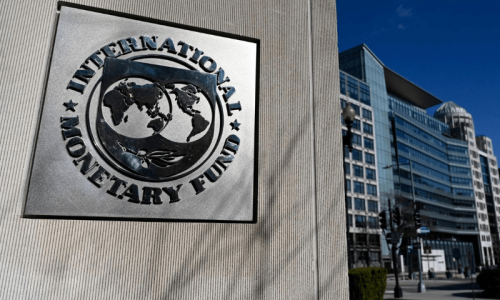IMF slashes Pakistan’s growth outlook to 0.5pc

On Tuesday, the International Monetary Fund (IMF) lowered its economic growth forecast for Pakistan for the current fiscal year to just 0.5 percent, as inflation has risen to 27 percent and unemployment has risen to 7 percent.
During the past six months, economic fundamentals have clearly deteriorated since October, when the Fund forecasted 3.5 percent growth in the country’s gross domestic product, versus 6 percent growth last year, and 20 percent inflation versus 12.1 percent last year amid a slowdown in the global economy and devastating floods.
The IMF estimates that global headline inflation will drop from 8.7 percent in 2022 to 7 percent in 2023 due to lower commodity prices, but core inflation – excluding volatile components such as energy and food – will decline more slowly.
According to the World Bank and the Asian Development Bank, Pakistan’s growth prospects have been revised to 0.4 percent and 0.6 percent, respectively. For this year, they also projected inflation at 29.5 percent and 27.5 percent, respectively.
IMF’s World Economic Outlook (WEO) estimates Pakistan’s unemployment rate to rise to 7 percent from 6.2 percent last year. As for fiscal 2024, the IMF expects economic growth to improve to 3.5 percent, inflation to remain high at 22 percent, and unemployment to decline to 6.8 percent.
The WEO estimates that the current account deficit will decline to 2.3pc of GDP in this fiscal year from 4.6pc a year ago and go up to 2.4pc next year despite the loss of growth, inflation, and unemployment.
A staff-level agreement was reached between the Pakistan authorities and the IMF mission after the IMF’s current account deficit forecast was 20 basis points lower than its earlier estimate of 2.5 percent.
In the latest outlook, the IMF has also slightly lowered its baseline forecast for global economic output from 3.4pc in 2022 to 2.8pc this year against its earlier projections of 2.9pc, then slowly rising and settling at 3pc five years out — the lowest medium-term forecast in decades. Compared to what was expected before the onset of adverse shocks since early 2022, this forecast indicates a “rocky landing” in the coming years.
Due to stubbornly high inflation and recent financial sector turmoil, the tentative signs of a soft landing in early 2023 have receded.
While inflation has declined as central banks have raised interest rates and food and energy prices have fallen, there are still sticky underlying price pressures in several economies, as labour markets are tight.
